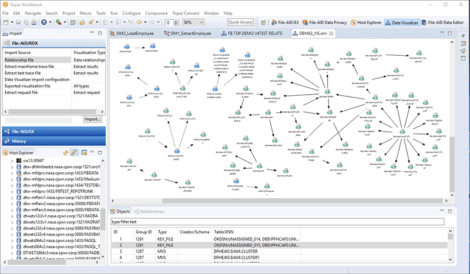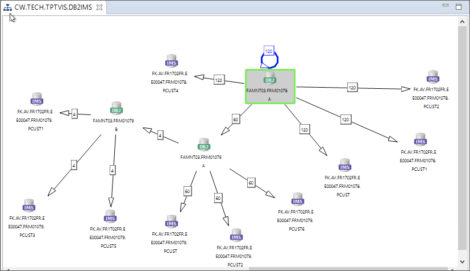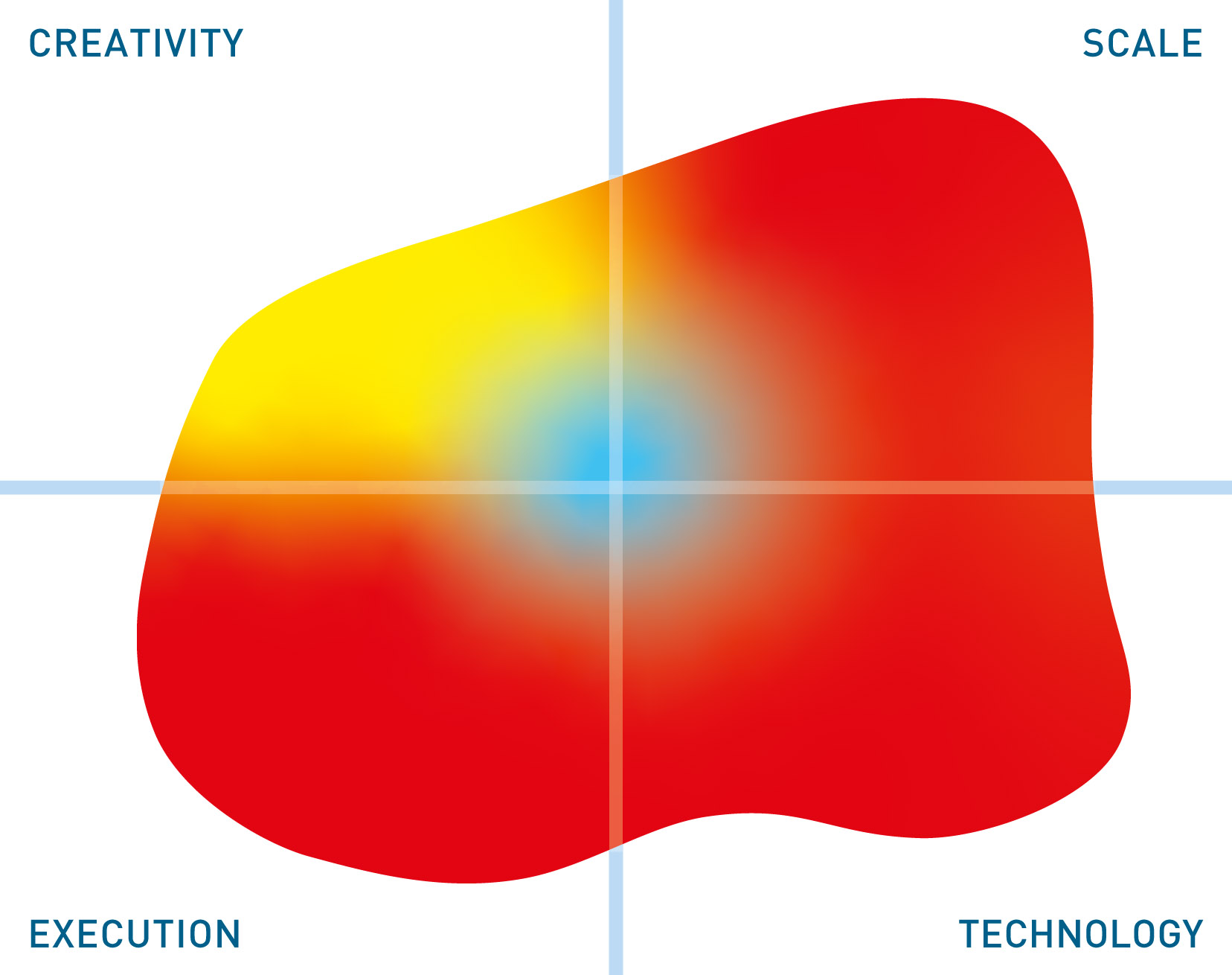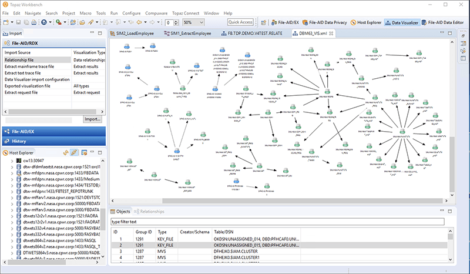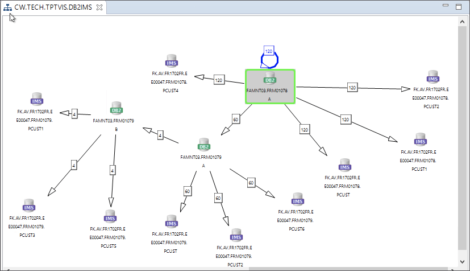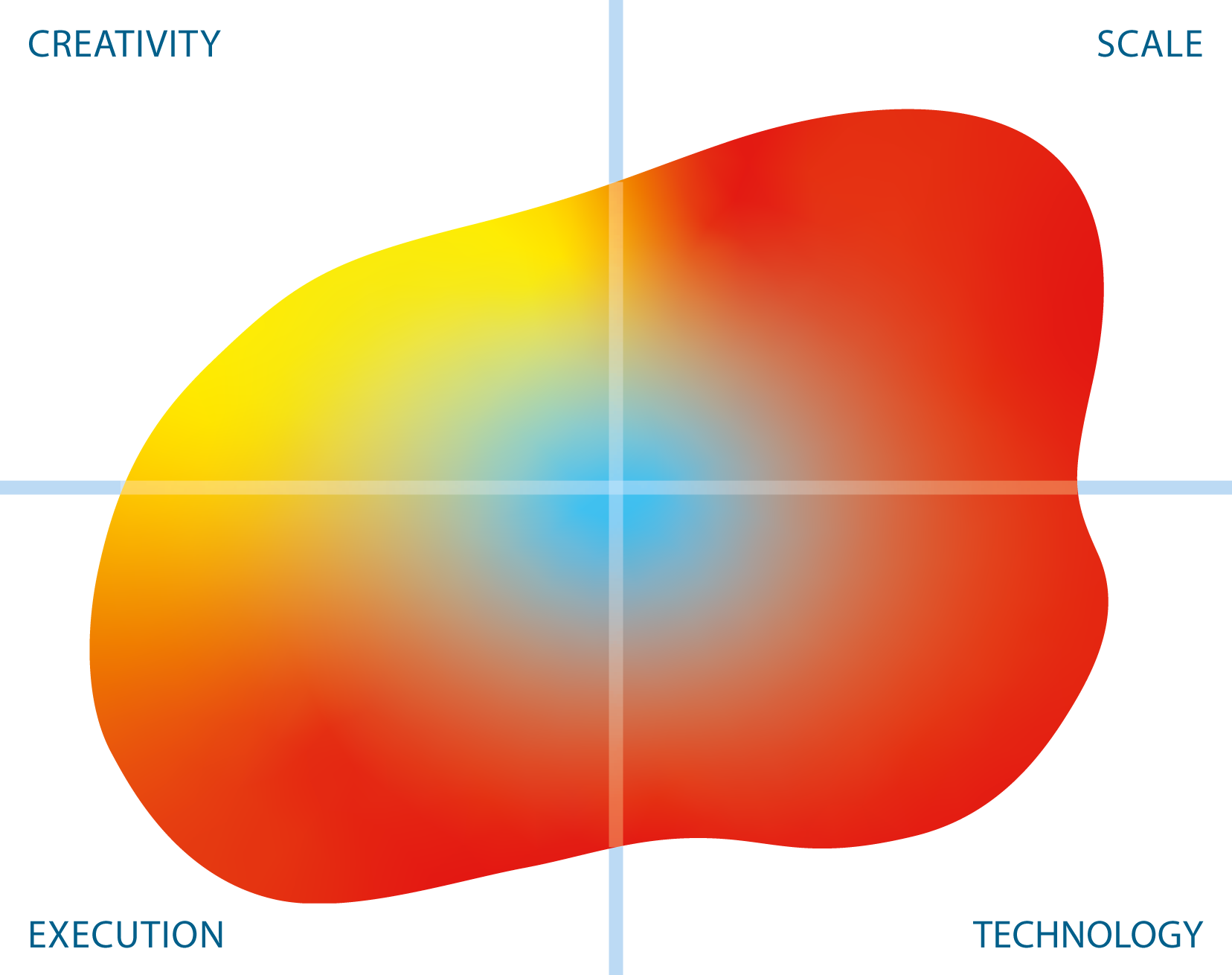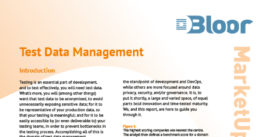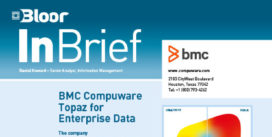BMC Compuware
Last Updated:
Analyst Coverage: David Norfolk, Philip Howard, Fran Howarth and Daniel Howard
BMC is a software vendor that offers solutions in a number of areas, including business automation, AI, security, service management, cloud computing, the mainframe, and more. It was founded in 1980, and is headquartered in Houston, Texas, though it has a global presence that stretches across North America, Europe, Australia and Asia.
BMC acquired Compuware, now a BMC company, in 2021. This has led to the creation of the BMC Compuware suite of tools, based largely on Compuware’s pre-existing product set but now integrated with and building off of BMC technology, particularly the company’s AMI DevOps offerings. This product line carries forward Compuware’s long-standing vision of modernising and mainstreaming the mainframe.
Application Performance Management
Last Updated: 6th January 2014
Compuware's Application Performance Management solution, known as Compuware APM, enables management of the end-to-end user experience, a superset of application performance testing and monitoring. It claims to make true user experience management a reality with monitoring of real, synthetic and third party users, together with business impact analysis. It can deterrmine the root cause of performance problems across environments and usually locate the line of code responsible.
It therefore facilitates good governance of automated business systems and helps to avoid wasted investment in IT. It complements development, by providing part of the feedback loop (considered part of DevOps at scale) between the production user experience and systems development/maintenance.
Compuware markets software solutions, including hosted software and software-related professional services, primarily through a direct sales force in the United States, Canada, Europe, Japan, Asia-Pacific, Brazil and Mexico. It also has an internal sales force in Lexington, Massachusetts, Richmond Hill, Ontario, and Maidenhead, England for its hosted software. Nevertheless, it does support independent distributors and partners as well, which, in conjunction with its own sales channels, gives it a presence in approximately 60 countries.
It markets its professional and application services primarily through account managers located in offices throughout North America.
It designs its marketing structure to help it keep abreast of, and respond quickly to, the changing needs of its customers, which, in essence, means that it regularly consults with the actual users of its products and services.
Compuware APM is targeted at large enterprises although its SaaS and service-based offerings should be accessible for smaller companies.
Compuware APM is based on two acquired tools: Gomez, a leading web application experience management tool, delivered on the SaaS model; and innovative APM vendor, dynaTrace.
It adopts a services-based approach to application performance monitoring, which it calls Compuware APM as a Service (APMaaS)
Compuware's Professional Services organisation operates worldwide and can assist not only with technology choices and implementation but also facilitate mainframe modernisation initiatives and assist with the integration of mainframes with the general IT environment.
Both classroom and online training is available.
Application Performance Management for Mainframe
Last Updated: 26th August 2013
Compuware's Application Performance Management solution for the Mainframe (Compuware APM for Mainframe) provides end-to-end mainframe application transaction visibility, across both mainframe and distributed environments - which means that less time is lost in disputes across silos and finding performance information lost in siloised 'black holes' when trying to address production performance issues. As well as addressing live performance issues, this solution lets its customers proactively use mainframe resources more efficiently (in other words, to 'save MIPS') by making mainframe resource utilisation transparent to more stakeholders.
It therefore facilitates good governance of the investment in business automation on the mainframe; and complements development as an enabler of the DevOps feedback loop.
Compuware markets software solutions, including hosted software and software-related professional services, primarily through a direct sales force in the United States, Canada, Europe, Japan, Asia-Pacific, Brazil and Mexico. It also has an internal sales force in Lexington, Massachusetts, Richmond Hill, Ontario, and Maidenhead, England for its hosted software. Nevertheless, it does support independent distributors and partners as well, which, in conjunction with its own sales channels, gives it a presence in approximately 60 countries.
It markets its professional and application services primarily through account managers located in offices throughout North America.
It designs its marketing structure to help it keep abreast of, and respond quickly to, the changing needs of its customers, which, in essence, means that it regularly consults with the actual users of its products and services.
Of necessity, Compuware Mainframe Solutions are targeted at large enterprise customers with existing mainframe installations. However, its APM tools will be of particular interest to mature organisations with modernised mainframe environments that fully integrate mainframe and distributed solutions as business services.
Compuware's APM solution consists of PurePath for z/OS CICS, PurePath for z/OS Java and Compuware Strobe.
- Compuware PurePath for z/OS CICS provides real-time CICS transaction monitoring for mainframe Service Provider or Service Requestor applications. It captures information for applications operating within one or multiple CICSplex regions and also monitors inter-process communications across CICSplex regions. It can also trace TCP/IP communications between CICS regions within a z/OS Sysplex and supports CICS Transaction Gateway and WebSphere MQ; Message Broker; and Enterprise Service Bus messaging technologies.
- Compuware PurePath for z/OS Java provides similar transaction visibility and messaging technology support for the mainframe WebSphere Application Server z/OS runtime environment, including both batch and online applications.
- Compuware Strobe provides root cause analysis for end-user experience/performance problems involving mainframe applications. It can identify SQL statements and DB2 system services using excessive CPU or wait time, based on detailed DB2 tuning information including catalog statistics and the number of SQL statement GET PAGE requests.
Compuware's Professional Services organisation operates worldwide and can assist not only with technology choices and implementation but also facilitate mainframe modernisation initiatives and assist with the integration of mainframes with the general IT environment.
Both classroom and online training is available.
BMC Compuware Topaz for Enterprise Data
Last Updated: 12th July 2021
BMC Compuware Topaz for Enterprise Data forms the bulk of BMC’s test data management (TDM) solution. More generally, it focuses on visualising and manipulating enterprise data across both mainframe and distributed systems. By incorporating elements of – or, failing that, integrating with – various other BMC Compuware products, most notably BMC Compuware File-AID and BMC Compuware Topaz Workbench, Topaz for Enterprise Data provides an effective, all-in-one platform for TDM.
Note that all Topaz for Enterprise Data functionality can be applied to (and, in regards to data masking, is consistent across) both mainframe and distributed data, and that in either case your test data can be accessed and handled through a single, universal, self-service user interface. Moreover, the introduction of an open framework – complete with a CLI for executing Topaz for Enterprise Data specifications – allows the most recent version of the product to readily operate as part of both a continuous testing and delivery process and a full DevOps toolchain. Finally, the product can be installed and will process data both on premises and in the cloud, provided proper data access rules are defined.
Customer Quotes
“Topaz provides our developers with a way to implement data privacy rules to obfuscate multiple data types across platforms and with consistent results.”
TCF Bank
The most basic functionality Topaz for Enterprise Data provides is the ability to easily browse and edit your data across a variety of data sources and file formats, including DB2, IMS, SQL Server, Oracle and VSAM, and in a variety of preset or custom layouts (including raw data, for those who need it). This includes a wide range of functionality, such as comparing data files, visualising data relationships (courtesy of the Data Visualizer, seen in Figure 1), and copying data from one LPAR to another. For TDM, Topaz for Enterprise Data offers data identification, masking, and subsetting, the latter via its ETL capabilities. The product also offers some data generation capability; however, this is recommended for use only as a complement to data masking and not as a standalone synthetic data capability.
To facilitate masking, you must abstract each type of data in your system (for instance, ‘first name’ data) into a ‘data element’ that can then have fields and masking rules attached to it (the former automatically via field name matching). A coverage view is available to display these associations, and a number of masking rule actions are available out of the box. Additional rule logic can be created via an expression builder. Masking rules can be collated and managed centrally, and each rule (or set of rules) is dynamically applied to its associated data element (or subset) at execution time.
Referential integrity is always maintained when masking, masking is propagated across relationships, and BMC Compuware’s patented ‘composite processing’ ensures that your data is masked consistently, even when it is present in multiple formats or contained within a larger field. For instance, Topaz for Enterprise Data will recognize that “Mary Jane Smith” and “Smith, Mary Jane” are the same name and mask them appropriately.
Subsets are created via fairly standard ETL processes, albeit with a grip of extra features pertinent to TDM. Extracts are created using a driver table; referential integrity is maintained within the subset, as well as between the subset and any relevant applications (specified manually); and the makeup of your extract is presented to you visually, including a step-by-step breakdown of how your extract was created (see Figure 2). The transformation step is achieved by applying expressions, and loading via drag-and-drop column mapping. Both are, as mentioned, fairly standard.
Note that everything we’ve said in this section applies equally whether you’re working with the mainframe or with distributed systems. In addition, reports and audit logs are generated throughout.
BMC distinguishes itself via its extensive support for the mainframe. The fact that it will handle mainframe and distributed data sources consistently, within a single platform, using identical functionality and methods, and via a single, consistent, friendly UI, is outstanding (and not just within the TDM space).
In addition, the abstract nature of data elements in Topaz for Enterprise Data makes it easy to mask several different but conceptually similar fields using the same set of rules, and minimises maintenance issues if those rules are ever changed. That said, matching fields to data elements based on their names is not always ideal: in practice, fields tend to be named arbitrarily and not necessarily with forethought. However, this is mitigated somewhat by the ease of adding fields to data elements, as well as use of the coverage view to preview data identification and rule assignment.
Moreover, the platform is now well equipped to foster both self-service and collaboration. In this regard, it benefits from improvements to its sister product, BMC Compuware Topaz for Total Test, that allow your developers to create ‘placeholder’ virtual test environments that can be instantiated with test data by your testers at a later date. Similarly, masking rules are designed to be created ahead of time (by your subject matter experts, for example) and applied by your testers whenever they need them. These features, among others, allow your various developers, testers, and teams thereof, to work independently and asynchronously from each other, minimising the potential for blockers and/or bottlenecks.
The Bottom Line
In many ways, Topaz for Enterprise Data is the test data management solution for mainframe. If you want to leverage mainframe data for testing purposes – whether in conjunction with distributed data or not – you should at least consider it.
Compuware Test Data Management
Last Updated: 18th June 2019
Compuware’s primary test data management offering is provided by Topaz for Enterprise Data, a part of the Topaz suite focused on visualising and manipulating enterprise data. In the predecessor to this report, we highlighted the effectiveness of Topaz Workbench and File-AID in delivering a test data management solution based on data discovery, masking and subsetting. These products still exist, and are as good as ever. However, much of their functionality has been incorporated into Topaz for Enterprise Data. This makes the latter an effective, all-in-one platform for test data management, and as such, it is what we will be discussing in this paper.
All Topaz for Enterprise Data functionality can be applied to (and, in regards to data masking, is consistent across) both mainframe and distributed data. The product is available on premises, or in the cloud via Topaz on AWS. However, its data privacy and data masking features are currently only available on-prem.
Customer Quotes
“Topaz provides our developers with a way to implement data privacy rules to obfuscate multiple data types across platforms and with consistent results.”
TCF Bank
The most basic functionality Topaz for Enterprise Data provides is the ability to easily browse and edit data across a variety of data sources and file formats, including DB2, IMS, SQL Server, Oracle and VSAM, and in a variety of preset or custom layouts (including raw data, for those who need it). This includes a wide range of functionality, such as comparing data files, visualising data relationships (Figure 1), and copying data from one LPAR to another.
For test data management, Topaz for Enterprise Data offers data privacy (via data discovery and masking) and data subsetting (via ETL). It’s intended that you will use the former to create a gold copy of your data, then extract subsets via the latter. To achieve this, you are asked to abstract each type of data in your database (for instance, ‘name’ data) into a ‘data element’ that can then have masking rules applied to it. Fields in your system are matched to data elements (by matching the field name) and masking rules are defined for each element. Several masking rules are available out of the box, and additional rules can be created via an expression builder. This allows you to, for example, mask a credit card number by randomising its digits, then recalculate its check digit to match its new value.
Masking rules are dynamically built and applied to each data element at execution time. Moreover, Compuware’s patented ‘composite processing’ ensures that data is always masked consistently, even when it is present in multiple formats or contained within a larger field. For instance, Topaz for Enterprise Data will recognize that “Mary Jane Smith” and “Smith, Mary Jane” are the same name and mask them appropriately (for instance, to “London XXXX Klein” and “Klein, London XXXX”, respectively). A coverage view is available prior to execution that will display which fields are mapped to which data elements, if (and how) they are going to be masked, and allow you to adjust as appropriate. Relational integrity is always maintained and an audit log and masking report is generated upon execution.
Having created your gold copy, Topaz for Enterprise Data allows you to extract subsets via its ETL capabilities. Creating an extract (and hence a subset) requires you to select and include a singular driver table, as well as any relevant data in related tables and columns. The data and relationships in your extract can be viewed graphically, as shown in Figure 2.
Once you have created your extract, you can proceed to transform it and load it into your target database. This is achieved by specifying mappings from the data in your extract to the tables and columns in your target, as well as any necessary transform expressions. Several of the latter are available out of the box, and you also have the option of creating your own. Both the extraction and loading processes generate appropriate audit logs and reports.
Finally, Topaz for Enterprise Data also offers the ability to generate synthetic data. However, this is recommended for use in concert with data masking and not as a standalone capability.
Compuware distinguishes itself via its extensive support for the mainframe, which is outstanding in the test data management space. The fact that it will handle mainframe and distributed data sources consistently and within a single platform is particularly helpful. Moreover, Compuware’s test data management offering has historically been very easy to use – especially bearing in mind that it manages mainframe data – and this is even more true now that several important test data management capabilities have been consolidated within Topaz for Enterprise Data.
In addition, the abstract nature of data elements in Topaz for Enterprise Data makes it easy to mask several different but conceptually similar fields using the same set of rules, and minimises maintenance issues if those rules are ever changed. That said, matching fields to data elements based on their names is not always ideal: in practice, fields tend to be named arbitrarily and not necessarily with forethought. However, this is mitigated somewhat by the ease of adding fields to data elements and use of the coverage view to preview data identification and rule assignment.
The Bottom Line
If you want to leverage mainframe data for testing purposes – either in conjunction with distributed data or not – you should certainly be considering Topaz for Enterprise Data.
Developer Productivity
Last Updated: 23rd September 2013
Compuware's Developer Productivity Solutions include Abend-AID (for dump interpretation); File-AID (for cross-platform file and data management); Hiperstation (for application quality assurance - testing - and data breach deterrence); and Xpediter (for interactive debugging and code coverage). They are available in traditional "green screen" form or delivered within the Compuware Workbench (a visual, interactive, developer environment). They help developers working on mainframe systems to maximize their productivity, assist with the control of costs and enhance delivery of useful services from the mainframe applications that are still mission-critical for many large organisations.
Compuware markets software solutions, including hosted software and software-related professional services, primarily through a direct sales force in the United States, Canada, Europe, Japan, Asia-Pacific, Brazil and Mexico; an internal sales force in Lexington, Massachusetts, Richmond Hill, Ontario, and Maidenhead, England for its hosted software; and through independent distributors and partners, giving it a presence in approximately 60 countries.
It markets its professional and application services primarily through account managers located in offices throughout North America.
It designs its marketing structure to help it keep abreast of, and respond quickly to, the changing needs of its customers. It consults with the actual users of its products and services on a regular basis.
It claims that its marketing strategies support the sales cycle with thought leadership, demand generation, press and analyst, trade show, seminar, and user group activities.
Of necessity, Compuware Mainframe Solutions are targeted at large enterprise customers with existing mainframe installations.
Compuware's mainframe developer productivity solutions are made available as part of an an open development environment with a developer-friendly GUI interface, which is known as Compuware Workbench. This aims to support the more efficient and effective execution of common mainframe tasks, enabling reuse of existing resources, for both experienced mainframme technicians and (especially) for those new to the mainframe environment or those supporting mainframes as part of an integrated business automation environment.
Compuware's Professional Services organisation operates worldwide and can assist not only with technology choices and implementation but also facilitate mainframe modernisation initiatives and assist with the integration of mainframes with the general IT environment.
Both classroom and online training is available.


